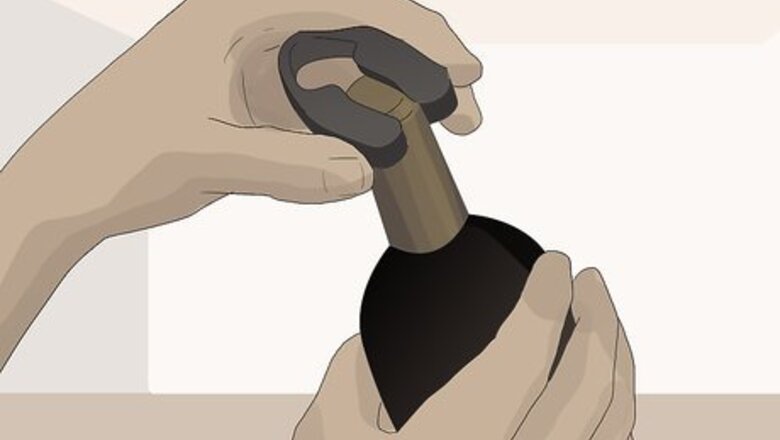
views
- After opening a bottle, re-cork it so that the wine stays fresh longer, and decant red wines that are 5 years old or more.
- Serve white wine in small-bowled glasses, red wine in large-bowled glasses, and sparkling wine in tall, thin glasses.
- Serve white wine first, followed by red and sweet wines, and pour it in a swift, steady motion until the wine glass has 5-6 ounces of wine.
Opening the Wines
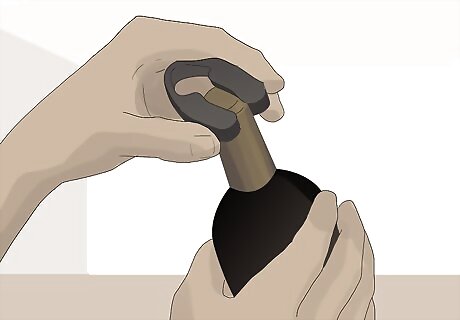
Cut the foil off the lip on each bottle of wine with a foil cutter. The lip is the raised rim at the top of the bottle. Position the foil cutter so it’s resting on the top of the lip and squeeze it to cut the foil that’s covering the cork. You can find a foil cutter online or at your local wine store.
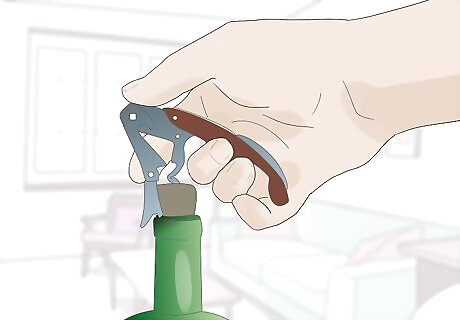
Uncork the wines with a corkscrew. Position the tip of the corkscrew on the cork so it’s a little off center. Push down and turn the corkscrew. Keep turning until you’re one turn away from the corkscrew being all the way inside of the cork. Then, pull up on the handle of the corkscrew with your fingers until the cork pops out of the bottle. Repeat on all the bottles of wine you’re serving. If you do not have a corkscrew, you can open the wine bottle using sommelier knife, a screw and pliers, or even a shoe.
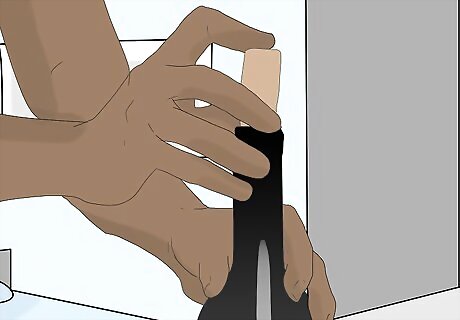
Re-cork opened bottles so they stay fresh. Insert the wine-stained side of the cork back into the bottle after you've poured some of the wine into a glass. Store the wines in the fridge when you're not drinking them. The cold temperature will slow down the rate at which the wines go bad.
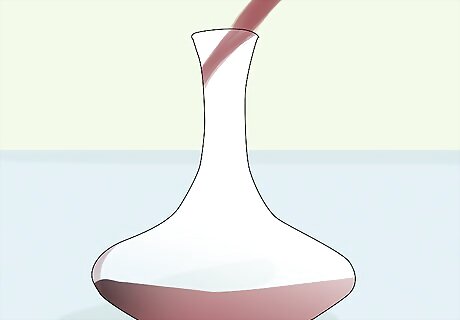
Decant red wines that are 5 years or older. After 5 years, bottles of red wine can develop bitter-tasting sediment. Decanting separates the wine from the sediment. After you open the bottle of red wine, slowly pour the wine into a wine decanter. When you get to the last bit of wine in the bottle, carefully observe the inside of the neck of the bottle. When you see sediment start to accumulate on the neck, stop pouring. Pour your guests wine using the decanter. When the decanter is completely empty, refill it with another bottle of red wine.
Choosing Wine Glasses
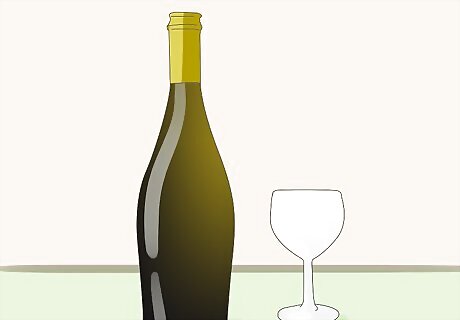
Serve white wines in small-bowled glasses. The bowl is the part of the glass the wine sits in. Serve light-bodied white wines, like Moscato and Soave, in wine glasses with bowls that are tall and thin. Full-bodied whites, like Viognier, should be served in wine glasses with shorter, rounder bowls.
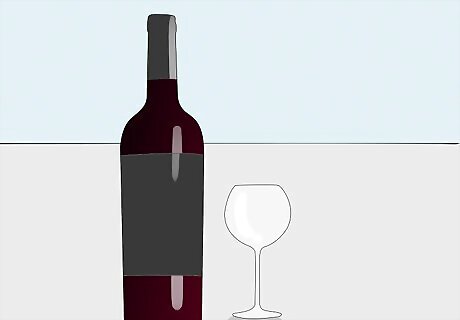
Serve red wines in large-bowled glasses. The wider opening of the bowls in red wine glasses makes the wine taste smoother. Full-bodied red wines, like Cabernet Sauvignon, should be served in tall, large red wine glasses. Serve low-bodied reds, like Pinot Noir and Gamay, in a shorter glass with a slightly rounder bowl.
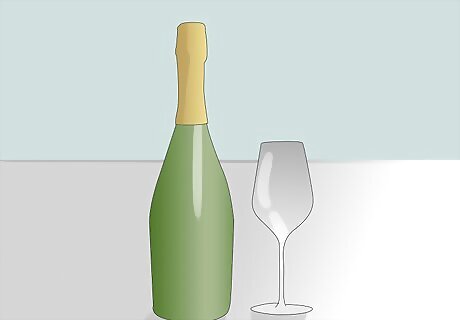
Use tall and thin glasses for sparkling wines. Sparkling wine glasses have a thin bowl with a small opening. They’re thinner and more tapered at the base than white wine glasses.
Pouring the Wines
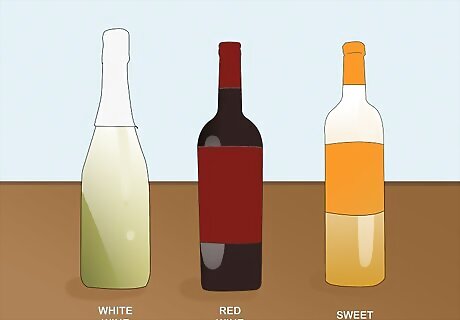
Serve white wines first, followed by reds and sweet wines. After serving your light-bodied whites, like Pinot Grigio and Asti, move on to full-bodied whites, like Chardonnay and Viognier. Then transition into your reds, starting with light-bodied red wines, like Lambrusco, and finishing with full-bodied red wines, like Barolo. Save sweet wines, like Sauternes and Vintage Port, for last.
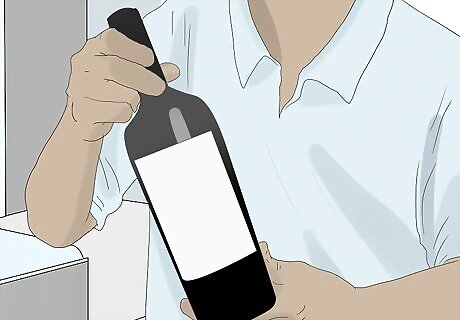
Hold the wine bottle so the label is facing out. This is just a courtesy so people can see what kind of wine you’re serving them.
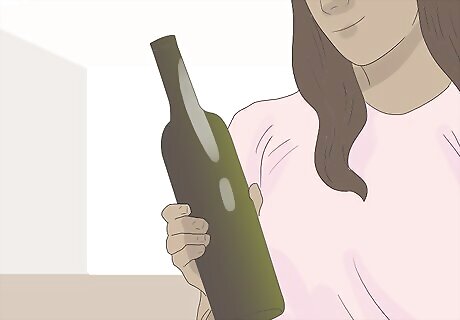
Hold the bottle by the body with your dominant hand. The body is the wide base of the bottle. Firmly grasp the body with your fingers so the bottle is secure in your hand. Place a wine glass on a flat surface in front of you.
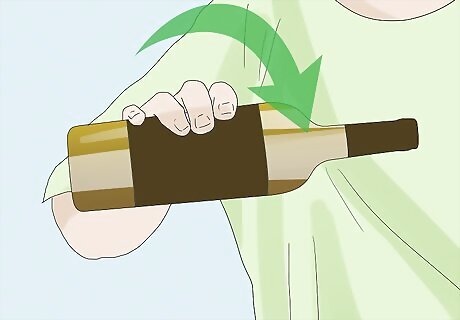
Turn the bottle horizontally to start pouring. The neck and lip of the bottle should be hovering about 1 inch (2.5 cm) above the rim of the wine glass you’re pouring the wine into. Don’t rest the neck on the rim of the glass. The side of the wine bottle should be parallel with the surface the wine glass is on.
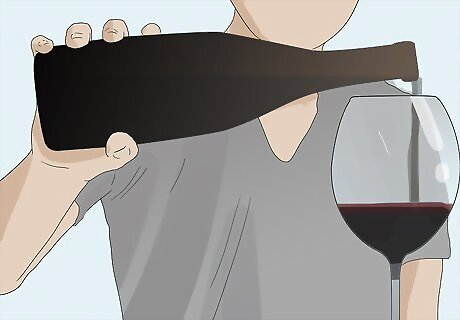
Pour with a swift, steady motion. Don’t hesitate or pour too slowly or wine will drip down the side of the bottle. Avoid moving or tipping the bottle when you’re pouring to prevent wine from splashing out of the glass.
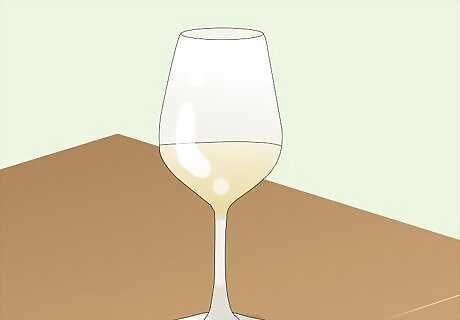
Fill the glass with 5-6 ounces (148-177 mL) of wine. Never fill wine glasses all the way up to the rim (it's OK if the foam comes up to the rim of the glass when you're pouring sparkling wines). Carefully watch the level of wine as you're pouring so you know when to stop. If you’re not sure what 5-6 ounces (148-177 mL) looks like, learn using a measuring cup. Before your guests arrive, practice filling a measuring cup with the right amount of wine and then transferring it to a wine glass. Memorize where the wine comes up to on each kind of wine glass so you know when to stop pouring.
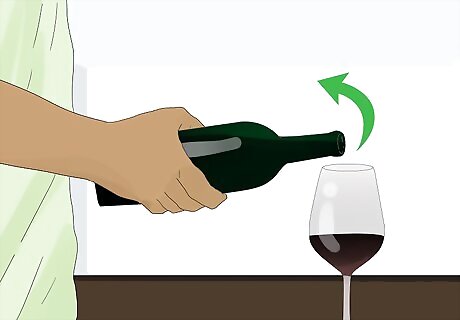
Turn the bottle back into an upright position. Be swift and steady. Don’t lift the neck of the bottle too slowly or wine will drip everywhere. Hold a napkin in your hand while you're pouring so you can catch any droplets with it when you lift up the bottle.
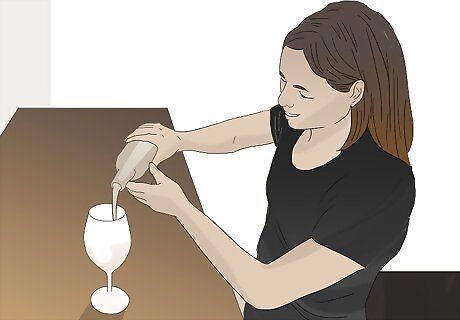
Chat with your guests and be mindful about refilling their glasses. If you see someone's glass is low, offer to pour them more wine. Tell your guests about the wines you're serving them. Let them know what kind of wines they are, how old each bottle is, and where they all came from.
Chilling the Wines
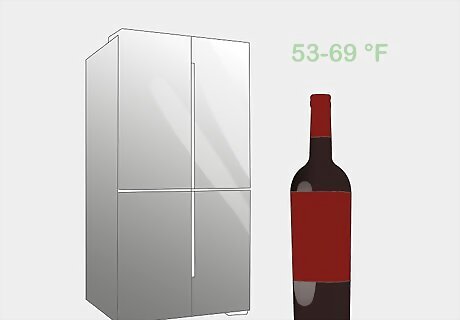
Chill red wine to 53-69 °F (12-21 °C). Always serve red wine below room temperature. Serve rich red wines, like Cabernet Sauvignon and Shiraz, at a warmer temperature than light red wines, like Pinot Noir and Zinfandel. Rich wines taste smoother when you serve them a little warmer. If you don’t have a wine cooler, chill the red wine in the refrigerator for 30 minutes before serving. Only chill rich red wines, like Merlot and Rioja, for 15-20 minutes in the fridge since they taste better warmer. If you're chilling wine in the fridge, turn the temperature dial up 1 or 2 notches so the wine doesn't get too cold. Don't forget to turn it back after you're done chilling the wine.
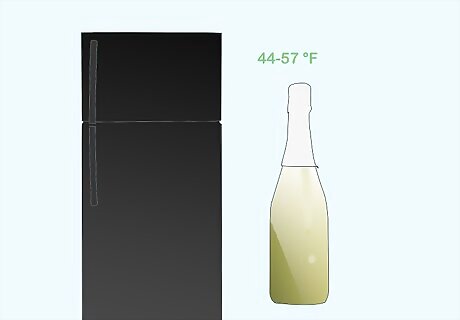
Serve white wine when it’s 44-57 °F (7-14 °C). Serve light, zesty white wines, like Chablis and Grenache Blanc, at the lower end of the temperature spectrum — 50 °F (10 °C) or colder — and oak-aged white wines at the higher end. Use a refrigerator to chill white wine if you don’t have a wine cooler. Place the wine in the fridge several hours before serving. Turn the temperature dial up 1 or 2 notches in the fridge when you're chilling wine. Regular fridge temperatures can make wines too cold.
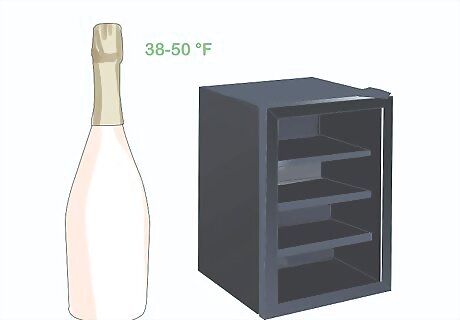
Chill sparkling wine in the freezer. Place it in the freezer one hour before serving so it reaches a temperature between 38-50 °F (5-10 °C). Expensive sparkling wines can be served at 50-55 °F (10-13 °C). Chill these wines in the refrigerator for a few hours before serving, like you would with white wines.













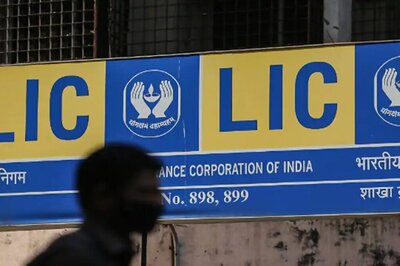





Comments
0 comment